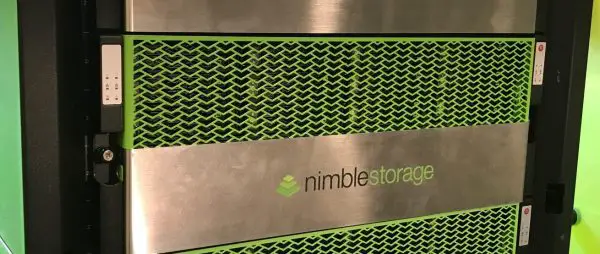I had the chance this week to attend HPE’s Storage Tech Day in Anaheim, CA. I’ve been fortunate to get updates about the storage portfolio and direction during HPE Discover events each year, but its been a while since I’ve had a full day devoted just to storage topics with HPE. Going into the event, I hoped that it would clarify the position of Nimble in the storage portfolio and I was glad to come away with some answers.
HPE is quick to point out that in acquiring Nimble, they acquired Infosight, the cloud analytics platform that Nimble had created. Infosight is not just an analytics tool for the Nimble storage arrays. Nimble realized early on that many of the perceived “storage problems” were never actually the storage array. As a startup trying to make its way in the market, it needed a way to help diagnose and pinpoint these other problems. Thus, Infosight was born out of the Nimble support organization.
Infosight combines the telemetry it gets from Nimble storage arrays along side of data it extracts from vCenter using vSphere API’s. It correlates this data and tries to identify patterns of activity not only for a single customer, but for its entire customer base. The Nimble team gave one great example of the power of these correlations. A customer called in with a problem that was determined to be an iSCSI issue in vSphere 6.5 that occurs under certain circumstances and with certain vSphere drivers. With this data, Nimble was able to identify all of the customers who fit the same conditions and issue a proactive alert to them and also work with VMware directly to address the iSCSI bug that was found. Incidentally, although I’m not a Nimble customer – I was one of those customers affected that Nimble helped VMware to fix.
Nimble quotes impressive numbers when it comes to Infosight. Some 86% of all cases for Nimble are autogenerated and solved by Infosight. And 54% of cases are not actual Nimble array issues at all. In fact, Nimble says Infosight is such a good analytic tool that many of its customers use it as first line support for more than just storage problems. (Is that a good thing? Yes, it proves Infosight is good, but… )
So, point #1 – HPE acquired Infosight and has big plans for it – so much so that its already branded HPE Infosight. The first order of business is getting Infosight and 3PAR married together. HPE says this is coming in the near future, but stopped short of quoting timelines. 3PAR already has rich telemetry within its arrays and has since its inception, but there is still work to be done to integrate it. HPE’s StoreFront Remote will be folded into Infosight at some point, due to overlapping capabilities. HPE also warned that we shouldn’t expect full capabilities in the initial release of 3PAR support for Infosight.
But, where do Nimble arrays fit?
But beyond the analytic cloud that Nimble created, Nimble also makes storage arrays. They seem to be good arrays (never have run them, so I say seem), but there isn’t a striking differentiation between the Nimble Hybrid Flash or All Flash storage arrays and any other dual controller array on the market – except for Infosight. So that begs the question, where does it fit in HPE’s portfolio.
For that answer, there are a few things I took away from the event this week.
Nimble All-Flash is a very competitive flash offering in the small to medium business and enterprise markets. It is priced below what HPE can sell a 3PAR array. It makes it an excellent entry all-flash array, also. That’s not to pigeon hole the array, because it fits nicely in many larger enterprise business, also. Nimble All Flash provides deduplication and compression, as expected with any all-flash array.
Nimble Hybrid-Flash is highly competitive in the small to medium business markets. These make great lower tiers of storage in enterprise customers and fantastic starting points for small customers with less demanding IO requirements. Its much better than an MSA, but below a 3PAR. HPE admits there is overlap, but they don’t see it as a bad thing – they simply see it as choice.
And then, there is the Nimble Secondary Storage arrays. Targeted at backup, I knew the least about these going into the tech day. A Nimble Secondary Storage array is simply a Hybrid Flash array with global dedupe. The downside to enabling global dedupe is performance impact – the Secondary Storage array is slower than the Hybrid-Flash array, however, this makes it well suited to backup applications and deduplicating mostly-cold datasets. It also provides higher performance than most disk-to-disk storage arrays, like StoreOnce, allowing flash-boot capabilities and the ability to run some workloads on the array for recovery or dev/test – directly from the backup repository. This is a killer feature for many virtual backup solutions like Veaam, Nakivo, Vembu and others.
Disclaimer: HPE provided the travel, lodging and meal expenses for my trip. The information in this blog post comes only from me based on the observations and information shared during the Tech Day event, but was not dictated or reviewed by HPE.

